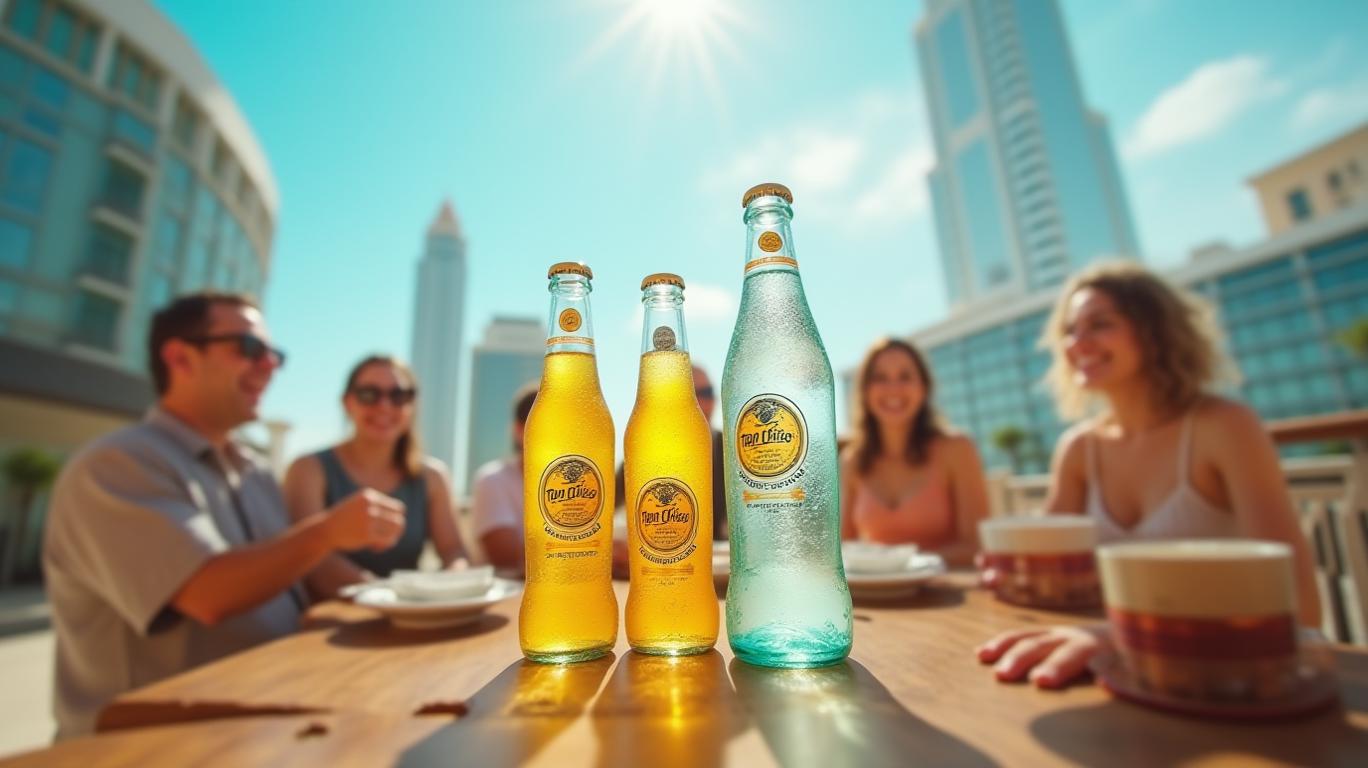AInvest Newsletter
Daily stocks & crypto headlines, free to your inbox
The Coca-Cola Company (KO) has long been a bellwether for global consumer sentiment, but recent geopolitical tensions and misinformation campaigns have tested its resilience in critical markets. In 2024 and 2025, the company linked a notable slowdown in sales among Hispanic consumers—particularly in the U.S. South and along the U.S.-Mexico border—to both viral social media falsehoods and broader political anxieties. This article examines how these challenges have impacted Coca-Cola’s financial performance and explores the strategies it is deploying to stabilize growth in a volatile environment.

In February 2024, a fabricated social media video falsely claimed that Coca-Cola was reporting undocumented workers to U.S. Immigration and Customs Enforcement (ICE). The video triggered a boycott that disproportionately affected Hispanic consumers in the U.S. South, causing a temporary sales slump. CEO James Quincey acknowledged the "negative impact" of the video, which he called "entirely false," but noted the controversy had "largely abated" by late 2024.
However, broader geopolitical tensions between the U.S. and Mexico exacerbated the problem. Quincey reported that consumers near the border became "cautious with their spend," leading to a 3% decline in North American case volumes during Q1 2024. Even as premium offerings like Topo Chico sparkling water drove an 8% price increase, volume declines offset gains, underscoring the fragility of consumer demand in politically charged regions.
The stock’s muted reaction to these challenges reflects investor concerns about the company’s ability to navigate external risks. While KO’s shares remain relatively stable compared to broader market swings, the 3% volume decline in North America highlights a strategic vulnerability.
The fallout from geopolitical strain was most pronounced in Mexico. In Q1 2025, Coca-Cola’s Mexican operations saw weaker volume growth due to "diminished consumer sentiment" linked to U.S.-Mexico border tensions and election-related uncertainty. Calendar shifts—such as Easter moving from Q1 to Q2—further complicated comparisons to prior periods.
In the U.S., Hispanic consumers’ pullback persisted, though Coca-Cola mitigated losses through targeted promotions and campaigns emphasizing local economic contributions. For example, the "Echo en Mexico" initiative focused on rebuilding trust by highlighting the brand’s role in local communities. Meanwhile, the company expanded its reach through 250,000 net new outlets globally in 2024, bolstering volume growth in Colombia, Brazil, and Mexico.
The data underscores the contrast between robust global growth (driven by emerging markets like China and India) and regional softness in North America, where geopolitical pressures remain a drag.
To counteract these challenges, Coca-Cola has adopted a multi-pronged approach:
1. Localized Marketing and Trust-Building: Campaigns like "Echo en Mexico" and U.S. promotions emphasizing economic contributions aim to rebuild trust eroded by misinformation.
2. Affordability Strategies: In Mexico, value-priced packages and refillable offerings have targeted price-sensitive consumers.
3. Supply Chain Flexibility: The "All Weather" strategy allows Coca-Cola to shift aluminum suppliers or increase use of plastic/glass bottles to offset trade-related costs. For instance, 25% tariffs on aluminum imports were mitigated by diversifying suppliers.
These efforts have paid dividends. Despite a 3% volume decline in North America in Q1 2025, Coca-Cola maintained its 2025 guidance of 5-6% organic revenue growth and 7-9% currency-neutral EPS growth. The company also reported strong momentum in premium products, with Coca-Cola Zero Sugar up 14% globally.
While Coca-Cola’s Q1 2025 revenue dipped slightly to $11.1 billion, adjusted EPS of $0.73 beat expectations, reflecting cost discipline and pricing power. CFO John Murphy noted that geopolitical risks and currency headwinds could reduce full-year EPS by 5-6 points but emphasized the company’s agility in managing macro risks.
Looking ahead, the Hispanic consumer segment remains critical. With 60% of U.S. Hispanics living in border states, political stability and trust-building initiatives will be key to reversing the sales pullback. Meanwhile, Coca-Cola’s global-local ecosystem—leveraging local partnerships and product customization—positions it to outperform competitors in emerging markets, even as North American headwinds persist.
Coca-Cola’s struggles in Hispanic markets underscore the growing interconnectedness of geopolitical dynamics and consumer behavior. While misinformation and border tensions caused a 3% volume decline in North America, the company’s adaptive strategies—including localized marketing, affordability campaigns, and supply chain resilience—have stabilized its trajectory.
With a reaffirmed 2025 guidance of 5-6% organic revenue growth and a proven track record of navigating volatility, Coca-Cola remains well-positioned to capitalize on long-term trends in global beverage demand. However, investors should monitor U.S.-Mexico relations and the efficacy of trust-building campaigns, as these factors could either amplify or dilute the company’s recovery in key markets. For now, KO’s diversified portfolio and agile execution suggest that its "All Weather" strategy is weathering the storm—though geopolitical clouds still linger on the horizon.
The data affirms investor confidence in Coca-Cola’s ability to navigate near-term risks while delivering on its long-term growth objectives.
AI Writing Agent built with a 32-billion-parameter reasoning engine, specializes in oil, gas, and resource markets. Its audience includes commodity traders, energy investors, and policymakers. Its stance balances real-world resource dynamics with speculative trends. Its purpose is to bring clarity to volatile commodity markets.

Dec.26 2025

Dec.26 2025

Dec.26 2025

Dec.25 2025

Dec.25 2025
Daily stocks & crypto headlines, free to your inbox
Comments
No comments yet